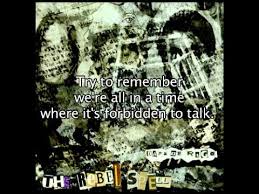A map is much like a story – it tells of a shared cultural history as much as it does geopolitical landscape. The trial of the Wet’suwet’en and Gitxsan people against the Crown was a great example of just how the Aboriginal population proved so resourceful in their fight for sovereignty. In Matthew Sparke‘s article, “A Map that Roared and an Original Atlas: Canada, Cartography, and the Narration of Nation,” he examines the correlation in theme of the trial and the writing of volume one of the Historical Atlas of Canada. The importance of cartography is highlighted in these cases, and Sparke shows the challenge they present to the pre-existing homogeneous, dominant perceptions of our nation’s history.
The Atlas invites readers not only to learn more about the history of Canada, but also to re-think their perspectives about what Canadian citizens have been commonly taught in schools. It challenged the political certainties of affirming the nation-state as the ones in power, the ones in charge. It undermined the idea that the sovereignty of Canada has always been a legitimate and just accomplishment. However, the Atlas shows that it is not just sovereignty from Britain that Canada successfully acquired, but sovereignty over a native population whom had to be conquered.
Sparke speaks of a concept metaphor, which he calls ‘contrapuntal cartographies’. It is the perception that the solid cartographies already in existence, need to be questioned and sometimes re-mapped. It is through this interpretation that there can be “a strategic revoicing of the subdominant to make it equal to the dominant and thus to orchestrate a balance that can potentially edify and educate an audience about the power relations of culture” (Sparke 467). Canada and the world are in dire need of this openness to re-interpret and re-evaluate the histories that have been fed to a gullible world.
When Chief Justice Allan McEachern reacted to a map dictating Wet’suwet’en and Gitxsan territory with the words, “we’ll call it the map that roared,” (Sparke 468) it illustrated a beautifully tragic metaphor. The roar could interchangeably be one of turmoil or triumph, depending on the two interpretations that Sparke offers. One reflecting the tumultuous anachronism of the situation, and one of a fiery resistance. Seeing as how Chief Justice rejected Wet’suwet’en and Gitxsan claims, perhaps he perceived the roar as one of futility – that of a dying wild animal, tired from its fight, yet persistent in its frustration.
The resistance – a fight worth fighting! The roar is a pledge of non-compliance, of sovereignty and self-governance, of independence as a society. The roar is a shaming of Chief Justice and his decisive blows to an entire population of people attempting merely to reclaim what was rightfully theirs.

Bibliography
Sparke, Matthew. “A Map that Roared and an Original Atlas: Canada, Cartography, and the Narration of Nation.” Annals of the Association of American Geographers (Vol. 88 No. 3) Sept. 1998: 463-495.

I really like your posting, and I agree that it can be interpreted in different ways. I personally believe that in this case – keeping in mind the later decision of the Chief Justice – his expression “the map that roared” was meant to highlight the problems this map could cause between Indigenous people and the colonizers, should it ever be acknowledged, since it showed a total disregard of any of the colonization’s consequences.
Hi! I really enjoyed reading your post.
In regards to your interpretation of Chief Justice’s reaction, do you think his phrasing could indicate that he was feeling intimidated by the power and persistence of the Wet’suwet’en and Gitxsan people?
Hi Tillie! Thanks! It’s hard for me to imagine what Chief Justice was feeling at the time… Judging by his decision, I picture him feeling empowered and not at all empathetic, perhaps imagining the roar to be one of futility.